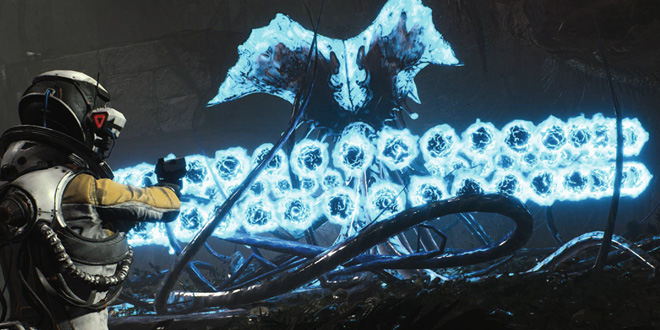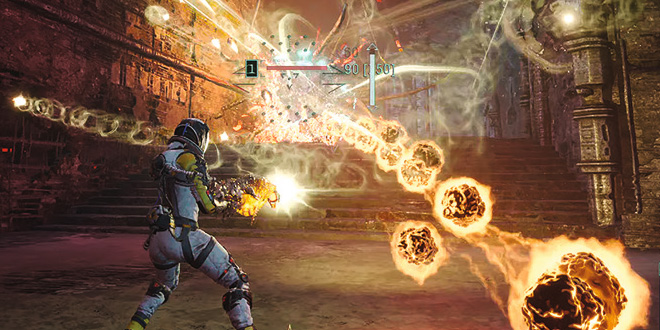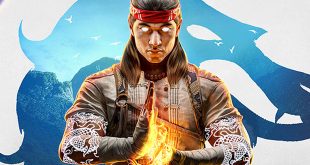 If you’re reading this article, you probably don’t need me to tell you that it is often hard to be a game developer. Even worse – you can put everything you have into a project, create an actual work of art, and after all that … it can just not catch on with players in the way that was hoped. No one wants to find themselves in that position, let alone find themselves in it over and over again following each new release.
If you’re reading this article, you probably don’t need me to tell you that it is often hard to be a game developer. Even worse – you can put everything you have into a project, create an actual work of art, and after all that … it can just not catch on with players in the way that was hoped. No one wants to find themselves in that position, let alone find themselves in it over and over again following each new release.
After creating a series of arcade shooters which were critical darlings, but had failed to translate into mainstream financial successes, Housemarque, the developers behind Resogun, Nex Machina and Matterfall, had realised it needed to adjust what it was doing if the company was to survive. As part of an ‘ARCADE IS DEAD’ blog post that was made to announce Housemarque’s change in direction back in 2017, CEO Ilari Kuittinen rather bleakly said “I think we’ve seen the writing on the wall for quite a long time. We were just hoping that we might be able to reverse the tide.”
In its search for solutions, the having-to-adapt studio revealed Stormdivers, a third-person multiplayer battle royale game with speeder bikes that frankly left most audiences unimpressed in the wake of giant competitors like Fortnite and Call of Duty: Warzone. It was quietly ‘put on hold’, as a new game – their “biggest and most ambitious title yet”, as described by Kuittinen – went into full scale production.

ARCADE IS DEAD, LONG LIVE ARCADE
Four years later, Housemarque released Returnal, a cinematic action adventure game that at a first glance had more in common with something like Sony flagship franchises Uncharted and The Last of Us, but under closer approximation had lost none of the studio’s brand of hardcore arcade style video game action at all. When it came to shifting towards that sort of presentation style for their latest project however, it was equally important to learn lessons from sci-fi horror masters across other mediums.
“We did have a lot of cinematic and literary influences. I think things like Lovecraft, and cosmic horror in all its different manifestations, was one really big influence. Dark sci-fi in all these different forms was really influential for us as well.” explains game director Harry Krueger. “I can’t avoid mentioning things like Aliens, Event Horizon, or even Prometheus more recently, and all for different reasons. I think it was about just picking and mixing a lot of different types of creative sensibilities and elements while reinforcing the story we were trying to tell.” Housemarque was also keen to stick to their guns in terms of house style, despite the new scope. With that came a commitment to “bullet hell”, a thing regularly seen in the arcade scene, but rarely in games with Returnal’s tone and scale. This led to a rather unique look for Returnal among its PS5 contemporaries, as focus was put on keeping things not just fast and explosive, but readable at a glance.
“One of the key goals that we had was actually to try to preserve that arcade spirit when shifting to this big budget production. We’ve established a fairly unique kind of explosive, neon infused arcade action at Housemarque,” said Krueger. “I think one of our main goals for Returnal was to take all of those sensibilities and just crank them up to 13. So it was really just ‘How much can we put into the game and still keep it readable?’ There’s no such thing as too many explosions or too many particles. So we didn’t really draw a hard line, we just let the game decide. It was a very conscious decision to embrace ‘bullet hell’, and have that unapologetic video game flavour to the action.”

GOING ROGUE
Despite the desire to keep to Housemarque’s signature arcade roots, Returnal was developed during a time of fast-paced experimentation for the Helsinki-based studio, and the final game differs from Krueger’s only other directorial credit, the twin-stick shooter Nex Machina, on a design level in almost every way. This was a conscious choice, as Housemarque did not want to rest on its laurels, preferring to explore new ideas with its expanded budget and team.
“There were so many things that we were doing for the first time ever. It was our first time making a third-person game with a new 3D camera. Even just taking one of our previous games and giving it that 3D treatment would have been more than enough to keep us busy for four years. But in addition to that, we wanted to explore procedurally generated content, so a roguelike formula, for the first time,” explained the director.
“We also wanted to tell a story for the first time. All of this was being done in an engine that we were still learning and were largely unfamiliar with, targeting a platform that was just coming out, and targeting a new level of quality. In a 3D third-person game, the quality expectations are much higher than on a top down or a side-scrolling game, where you can kind of get away with cutting a few more corners. All of our previous games were 2D or 2.5D. I guess some of them might have had some minor kind of helper controls to move the camera a little bit. But this was the first time that you were given this agency as a player to control the camera, the aiming and even the traversal in 3D space. The shift to 3D introduced a new dimension of possibilities, but also added complexity to development.”
As if the enormous challenges it had presented itself with weren’t enough, Housemarque also decided to develop Returnal on Unreal Engine 4, a toolset that only a small number of the studio had used once before. Learning to use Unreal would be likely to speed up any work on future in-house projects, and would ultimately make hiring new talent easier and more efficient, but it was still a complex thing to do. It led to a period of adjustment at the studio, and some growing pains.
“We used Unreal Engine 4 to ship Returnal. Before that, we had also used Unreal for our previous game, Matterfall. But largely for the size of the team, we were very unfamiliar with the engine. So we were learning as we were running, in many ways. It was a pretty big departure from using our own proprietary tech that we had used for 25 years at Housemarque.” said Krueger, who was himself lead programmer on Housemarque’s Resogun, which released back in 2013.
“I think in general, designers, artists and animators were very happy [with Unreal]. I think programmers were the ones who had the steepest learning curve, as we needed to adapt to just working with this massive engine that was designed by someone else. There was [however] a bit of that intimacy lost with the code base that we had established with our own tech earlier.”

GROWING PAINS
The massive ambition and scale of the plans for Returnal soon led to Housemarque scaling up the studio alongside the increased scope of what it was developing. By the time the game shipped, the team had grown to around three times the size it had been at the start of development. If you were to include the game’s many co-developers, it was at least six times bigger. These were deemed necessary, as the studio quickly realised it had bitten off more than it could chew.
“When we started, we had this expectation that we’d be able to make this game, which at the time we felt was going to be much smaller, with 25 people. We said, ‘Yeah, well, what could go wrong?’ Luckily, Sony who was funding the project, they did believe in our vision, they saw that we had a unique concept and something with a lot of potential on our hands, and they really helped us just shift to this big, big production. They helped us along the way. We did have to grow the studio quite significantly. I think by the time we shipped Returnal, we had just over 80 people internally, and there were just as many people, if not more, helping us through co-dev. It was a massive jump, considering the previous biggest team that we had ever worked in was like 20 to 25 people.” said Krueger.
“Traditionally, we’ve had two projects running at the same time. Sometimes even more. This was the first time that we combined all of our efforts and focused them on a single project for the whole studio. There were so many new challenges we were facing in Returnal, at a new scope that was an order of magnitude larger than anything we’d done before, with higher quality standards for all our content. All this was done with a constantly growing team, working with co-dev for the first time, and constantly adapting to new production processes, with an evolving company culture.”
“Everything was new for us, and it often felt like we needed to take a leap of faith and build our wings while falling. We needed to shift from a garage band mentality to working with a full orchestra, in a way. I feel that one of the biggest challenges we faced was regarding the game’s instability – it’s not an exaggeration to say that Returnal was unplayable for over half of its development time. Many other problems stemmed from this. The game is the boss, and it’s much harder to solve creative problems and have that intimate, calculated iteration over a game when there isn’t a working build to playtest.”

CARVING A PATH
Despite a bumpy development, Krueger believes that if he were to go back in a cosmic time loop of his own and start over with the development of Returnal, he’d be unlikely to change much, if anything at all.
“It was a necessary process for us to just try things out, to see what works and what doesn’t. I mean, we could have just relied on trying to do what other games did, but we really felt strongly that we needed to carve our own path. You just need to do that through adversity sometimes. It’s easy to say that if I went back, we would have just designed the camera differently or the character like she looks now and skipped a few iterations, but I think all of that effort that we put into Returnal, all of the twists and turns, ended up creating the game that it was in the end. It couldn’t have turned out any different.”
“Define your own rules of cool. Find what you’re good at, and crank it all up to 13. Don’t overthink it. I think it’s very easy to get trapped chasing the promise of innovation. But quality often comes from doing ordinary things extraordinarily well. Be stubborn and chase your dream relentlessly, but be careful not to become a prisoner of that dream … Ultimately, the game is the boss. Look after it, playtest often, and listen to what it is trying to tell you every step of the way.”
Housemarque’s shift in scope to AAA cinematic games has thankfully paid off, as audiences have responded well to the new direction. Returnal has been a huge success both critically and commercially, and while the recently acquired PlayStation first party studio may not return to smaller arcade style experiences in the near-future, Krueger believes that they will continue to hold on to who they are, regardless of how big they may end up.
“Seeing the overwhelmingly positive reception and the numerous awards that Returnal has received has been incredibly humbling, encouraging and validating for all of us here at Housemarque. We feel that with Returnal we managed to establish a fairly unique voice in the third-person action space, and the arcade spirit is clearly an inseparable part of that core identity. So regardless of what form this may take in our next projects, you can expect to see countless more explosions, intense particle effects, tight controls and high-octane action from us in our future creative endeavours as well.”

 MCV/DEVELOP News, events, research and jobs from the games industry
MCV/DEVELOP News, events, research and jobs from the games industry




